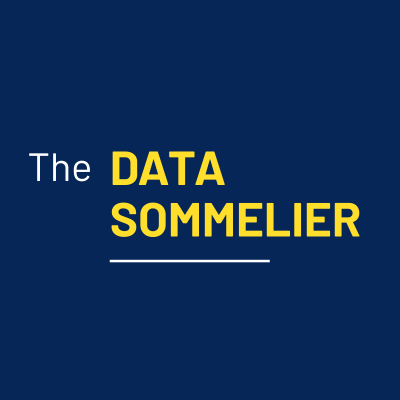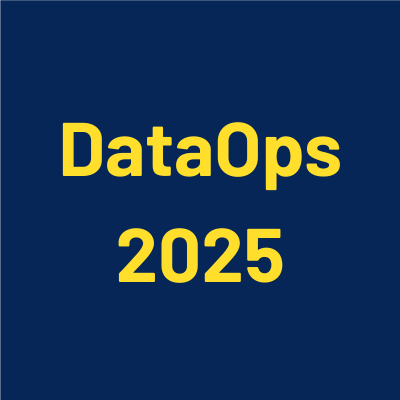Live Talks, Interviews, Reviews, Demonstration. Want to share your data story? contact me at stephane (at) datanosco.com – LinkedIn profile – follow DATANOSCO
📅 All the time
📍 LinkedIn, YouTube
Saison 2
Lives
– Data Modeling, Kimball vs Inmon, with Bill Inmon
– Tendances DATA & AI, rétrospectives et next steps
– Q&A sur la solution d’Automation n8n
– Feedback AWS Summit Paris 2025
– La plateforme DATA idéale ? Meetup OVHcloud & Aiven
– Streamlit, comment développer vos Data Apps interactives ?
– Data Framework : la méthode pour réussir votre projet DATA !
– Get AI Ready avec KeyLity : la Data Quality native Snowflake
S2E1
AI, with Live Data – Powering your RAG and ETL at scale, with Claire Nouet from Pathway. Replay LinkedIn.
S2E2
dbt vs SQLMesh, … Comparaison des solutions, avec Christophe Oudar. Replay LinkedIn.
S2E3
SnowConvert. Présentation des concepts et démonstration de la solution de migration vers Snowflake, avec Eric Lethier de Snowflake et Anthony MINDREN de Key Performance Consulting (KPC). Replay LinkedIn.
S2E4
MCP & Semantic Layer, with Artyom Keydunov from cube ! Replay LinkedIn.
S2E5
Kafka Improvement Proposal (KIP) 1150 introduces « diskless topics » to reduce the operational costs of running Apache Kafka in cloud environments, with Ivan Yurchenko. Replay LinkedIn.
S2E6
SnapLogic, the future is Agentic. Interview with Gaurav Dhillon. Replay LinkedIn.
S2E7
Apache Gravitino: Unified Metadata Lake for Data & AI assets, with Lisa N Cao. Replay LinkedIn.
S2E8
On plonge dans l’univers des bases de données transactionnelles en mettant un coup de projecteur sur Aerospike, une solution NoSQL, avec Nicolas WLODARCZYK. Replay LinkedIn.
S2E9
Google BigQuery, zoom sur les dernières annonces, avec Johan Picard. Replay LinkedIn.
S2E10
La Stack Data chez Orange France Pro, GCP, BigQuery, dbt, … avec Cédric Olivier. Replay LinkedIn.
S2E11
Retour sur les nouveautés Starburst AI, Functions, Workflows & Agents avec Victor Coustenoble. Replay LinkedIn.
S2E12
Openflow, l’intégration de données selon Snowflake, avec Pierre Villard. Replay LinkedIn.
S2E13
Calk.AI, vos Agents AI à votre service, en quelques minutes ! avec Gabriel Hardy-Françon. Replay LinkedIn.
S2E14
Introduction aux bases de données distribuées, avec Ugo Pollio, de CockroachDB Labs. Replay YouTube.
S2E15
ODPS: l’Open Data Product Standard, avec Jean-Georges Perrin. Replay LinkedIn.
S2E16
Introducing Databricks and n8n for Modern Data Intelligence, with Mike Lo. Replay LinkedIn.
S2E17
Le TOSIT, un acteur clé dans la promotion et la structuration de l’open source au sein des grandes entreprises françaises, avec Florian Caringi. Replay LinkedIn.
S2E18
Le protocole MCP démystifié : usages et potentiel, avec Yann Jouanin. Replay LinkedIn.
S2E19
Michelin, Data Federation, Self Service et stratégie Data Platform, avec Gwénolé Prié. Replay LinkedIn.
S2E20
Open Source, Open Data et DINUM (Direction interministérielle du numérique). Découverte avec Geoffrey Aldebert. Replay LinkedIn.
S2E21
Mise en œuvre de dbt et Airflow / Astronomer, avec Ismail Mezzour. Replay LinkedIn.
S2E22
Calista, le framework python open source pour gérer la qualité de données, avec Peter Gerges et Vincent Debouchaud de Aubay Data & AI. Replay LinkedIn.
S2E23
Starlake, la plateforme data open source, avec Hayssam Saleh. Replay LinkedIn.
S2E24
Draft’n Run, plateforme de création d’Agents IA et de Workflows, avec Marc Sanselme. Replay LinkedIn.
S2E25
From Data Contracts to « Talking to your Data », with Jochen Christ from Entropy Data. Replay LinkedIn.
S2E26
Gouvernance des données chez Etam, stratégie de mise en œuvre, avec Camille Maire. Replay LinkedIn.
S2E27
Migration de SAS vers Snowflake ! L’expérience de Wakam, avec Simon Pichon. Replay LinkedIn.
Saison 1
S1E1
Apache Iceberg, vers un nouveau standard du stockage de la donnée ? avec Victor Coustenoble. Replay LinkedIn.
S1E2
Découverte de The Apache Software Foundation Foundation, avec JB Onofré. Replay LinkedIn.
S1E3
FinOps, halte au gaspillage … où les bonnes pratiques à mettre en place pour optimiser les coûts d’une plateforme data, avec Matthieu Rousseau et Ismael Goulani. Replay LinkedIn.
S1E4
Un Lakehouse dans un cloud français, économiquement abordable et basé sur des composants opensource interchangeables, c’est possible ? avec Vincent HEUSCHLING. Replay LinkedIn.
S1E5
Talaxie, le fork Talend Open Studio. L’initiative de Jean Cazaux. Replay LinkedIn.
S1E6
De PowerMart à IDMC, en passant par PowerCenter, Christophe Fournel retrace les 30 dernières années d’Informatica. Replay LinkedIn.
S1E7
Le retour des ‘Data Platforms’. Interview de Eric Mattern. Replay LinkeIn.
S1E8
Le projet Icehouse avec Victor Coustenoble, une plateforme Lakehouse intégralement gérée, qui combine le moteur de requête opensource Trino et Apache Iceberg.
S1E9
Retour sur la conférence Subsurface, organisée par Dremio qui s’est déroulée les 2 et 3 mai 2024 à New York. Charly Clairmont en profite pour nous rappeler ce qu’est Dremio et ses différents cas d’usages. Replay LinkedIn.
S1E10
La gouvernance de données, c’est d’abord une question organisationnelle ! Daniel MALOT nous parle de son expérience terrain et décrit les étapes nécessaires pour mener à bien un projet de gouvernance en nous faisant découvrir quelques aspects de sa solution META ANALYSIS. Replay LinkedIn.
S1E11
Pierre Villard retrace l’histoire de la solution Apache NiFi, véritable gateway universelle permettant le développement de pipelines de mouvements de données, aussi bien en mode batch qu’en streaming. Replay LinkedIn.
S1E12
Le streaming, une nouvelle façon de penser l’architecture des applications et d’améliorer les usages de la data ! Fred CECILIA constate que le streaming s’impose naturellement lorsqu’on a vainement essayé d’optimiser les batch existants. Replay LinkedIn.
S1E14
Alexandre Guillemine de chez Foodles nous détaille toutes les étapes de son projet de migration de PostgreSQL vers Snowflake ! Replay LinkedIn.
S1E15
Amphi, un ETL opensource pour faire du RAG, développé par Thibaut Gourdel ! Replay LinkedIn.
S1E16
Cloudera, de l’ère Bigdata à l’ère de l’IA, interview de Denis Fraval. Replay LinkedIn.
S1E17
DCP, la Data Platform ClickOps Self Service, avec le témoignage d’EDF. Interview de Frederic Collin et Edouard Rousseaux. Replay LinkedIn.
S1E18
Qu’est que la Data Observability ? avec Mahdi Karabiben de la société Sifflet. Replay LinkedIn.
S1E19
On en parle depuis quelques temps, de la Composable Data Platform, l’architecture émergente multi-engine qui va changer la façon dont on pense l’ingénierie des données. Julien Hurault explique comment Apache Iceberg, un format de table ouvert, peut servir de couche de stockage commune à différents moteurs tels que DuckDB, Snowflake ou SQLMesh. Replay LinkedIn.
S1E20
IBM watsonx, la plateforme DATA et IA, avec Mehdi Boulaymen. Replay LinkedIn.
S1E21
Open Metadata, un open source pour la gouvernance des données, la gestion de la qualité des données et la Data Observability, avec Teddy Crépineau. Replay LinkedIn.
S1E22
DuckDB, le moteur OLAP open source qui se distingue par sa légèreté, sa performance et sa capacité à traiter des volumes importants de données. Interview de Antoine Giraud. Replay LinkedIn.
S1E23
On explore la solution n8n, outil d’automatisation low-code. Intégration de PDF complexes via l’AI et APIs, avec Valérian Lebert. Replay LinkedIn.
S1E24
On découvre la nouvelle fonctionnalité Google SQL Pipe Syntax qui fonctionne entre autre pour BigQuery, avec Axel Thevenot. Replay LinkedIn.
S1E25
On parle temps réel, Change Data Capture (CDC) et de son rôle dans la modernisation des systèmes d’information, avec Benjamin Djidi. Replay LinkedIn.
S1E26
Data Mesh, Data Contract, Data Product, … où en sommes nous ? Avec Philippe Nieuwbourg de Decideo. Replay LinkedIn.
S1E27
« Medium Code », un nouveau type de programmation qui se situe entre le « low code » et le « hard code ». On fait le point avec Pierre Pilleyre. Replay LinkedIn.
S1E28
On plonge dans l’univers fascinant du stream processing, avec Fred CECILIA, en mettant l’accent sur Apache Flink, un outil puissant qui gagne en popularité. Replay LinkedIn.
S1E29
Gilles Barbier nous présente Infinitic, framework EDA (Event Driven Architecture) open source pour l’orchestration de processus métier, qui s’appuie sur Apache Pulsar. Replay LinkedIn.
S1E30
Romain Ferraton nous parle de son projet permettant d’explorer l’évolution de plus de 1000 bases de données sur une période de 50 ans, sous différents angles d’analyse. Replay LinkedIn.
S1E31
Gravitee, l’entreprise française spécialiste de l’API Management. On explore les concepts fondamentaux de cette plateforme open-source avec Adrien Lacombe. Replay LinkedIn.
S1E32
Metagrid, une autre façon d’imaginer la gestion des métadonnées ?Avec Ole Olesen-Bagneux. Replay LinkedIn.
S1E33
KNIME, une plateforme de no-code/low-code qui facilite la manipulation et la transformation des données. Q&A avec Kevin Rosamont Prombo. Replay LinkedIn.
S1E34
Nicolas Averseng nous fait découvrir l’approche StratOps et sa solution YOOI, qui permet de relier la stratégie data à l’opérationnel. Replay LinkedIn.
S1E35
CDP ? Qu’est-ce qu’une Customer Data Platform ? On en parle avec Oussama Ghanmi de la société DinMo (Data In Motion). Replay LinkedIn.
S1E36
Comment contruire un Lakehouse en n’utilisant que des composants AWS ? Voilà l’exercice imposé auquel Arnaud Milleker s’est plié, et il nous explique les étapes. Replay LinkedIn.
S1E37
Apache Hop is an open-source low/no-code data integration platform. Bart Maertens, Hop PMC Member is leading the project and we are with him for this interview ! Replay LinkedIn.
S1E38
Bruin: The all-in-one Data Ingestion, Transformation, Data Quality & Governance framework ! Interview with Burak Karakan & Paul Marcombes. Replay LinkedIn.
S1E39
Coreandgraph, prototype open-source utilisant les graphes pour visualiser et analyser les données d’une organisation, avec Arthur Sarazin pour nous parler de documentation, de gouvernance et de Knowledge Management ! LinkedIn.
S1E40
Les coûts cachés de l’absence de Gouvernance de Donnée, avec Cédric FALCONNET ! LinkedIn.
S1E41
Workato, l’iPaaS en tête du MQ Gartner, avec Philippe Amiel ! LinkedIn.
S1E42
RisingWave, The Open Source Streaming Database, interview with Yingjun Wu ! LinkedIn.



